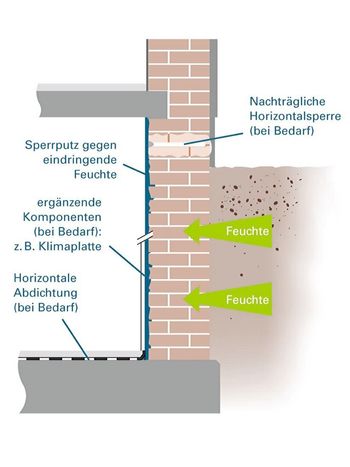
Horizontalsperre
Muffy smell, mold, dampness on the furnishings and stored objects - wet walls create numerous problems. One of the causes of this can be ascending moisture. In new buildings, this is prevented by placing a water-impermeable film in a horizontal bearing joint in the lower region of the foundation walls. This horizontal barrier can not overcome the ascending water. In the case of old buildings, there is partly no horizontal barrier, in other cases it is defective. If this deficiency leads to moisture damage, a new horizontal barrier can also be applied retroactively.
If rising water is the cause, then you have to block it. This is followed by the physical processes behind the moisture penetration: the finest pores and crevices, the capillaries, can rise against the gravity due to the so-called capillary effect. In this way, the wall drains from the floor into the masonry and continues upwards until the whole wall is damp.
On the other hand, barrier layers, which are installed horizontally in the masonry, help. Their goal is generally to create a continuous "capillary layer", which prevents the transmission of moisture in the masonry. Above the created water repellent line, the building fabric can dry out, which is supported by systematic ventilation and application of refurbishing plasters. This is not a fundamentally new idea: some old buildings have such a layer as asphalt and lead sheets, sometimes also glass or glazed bricks, but only at a height just below the ground floor.
For the renewal of the horizontal barrier, there are a number of possibilities which can be roughly divided into mechanical processes and injection procedures.







